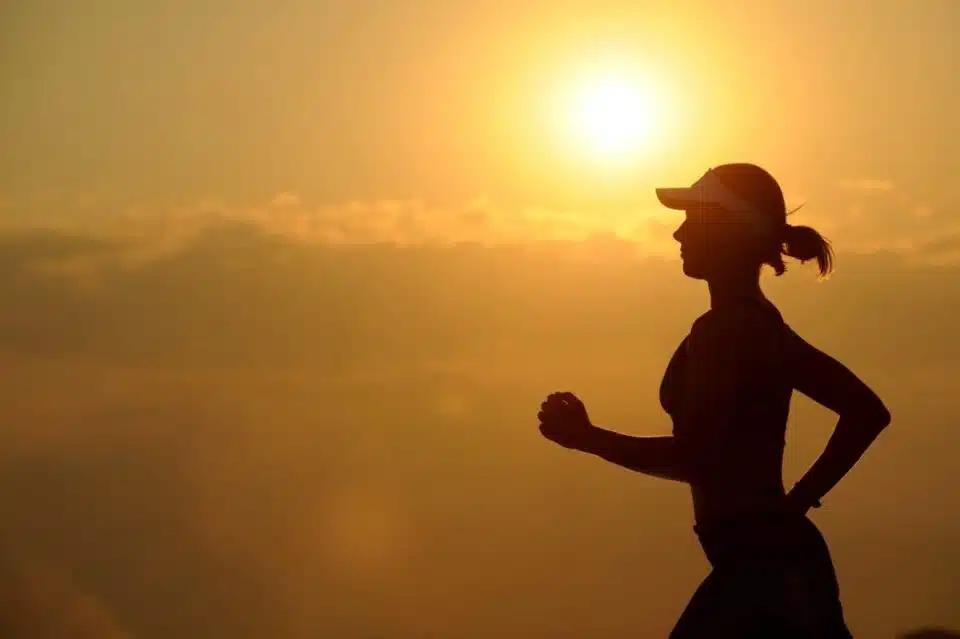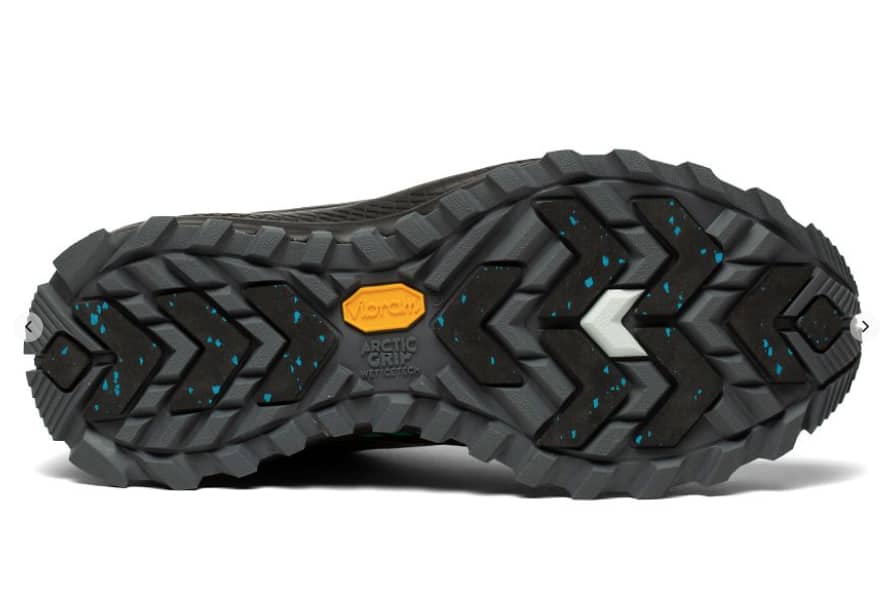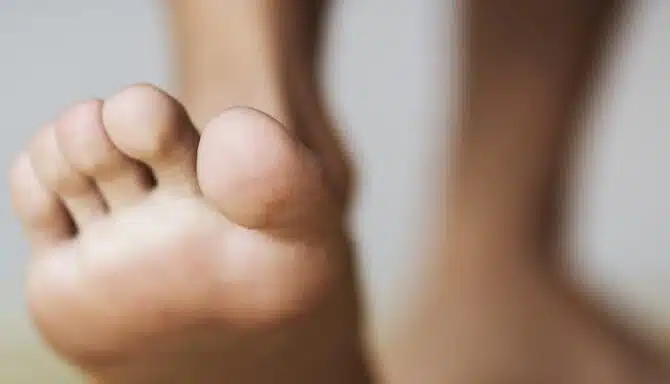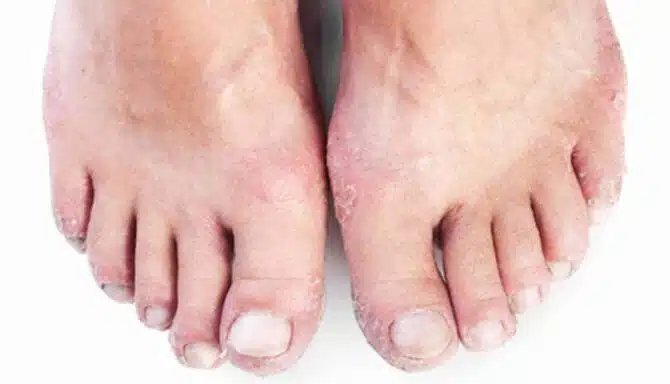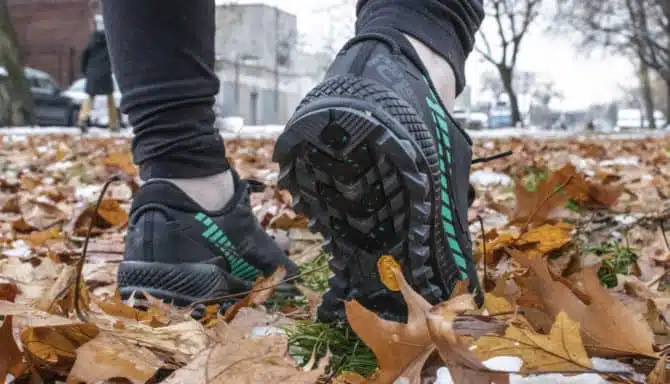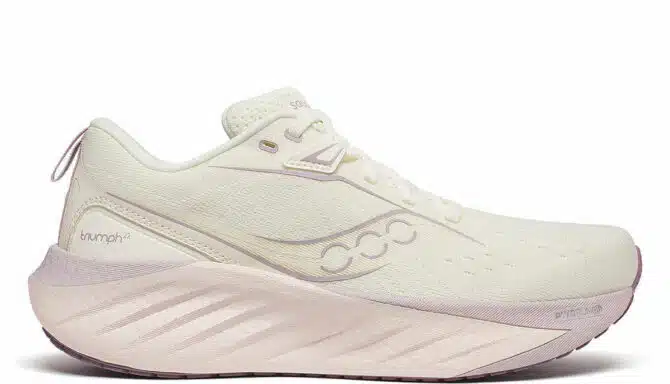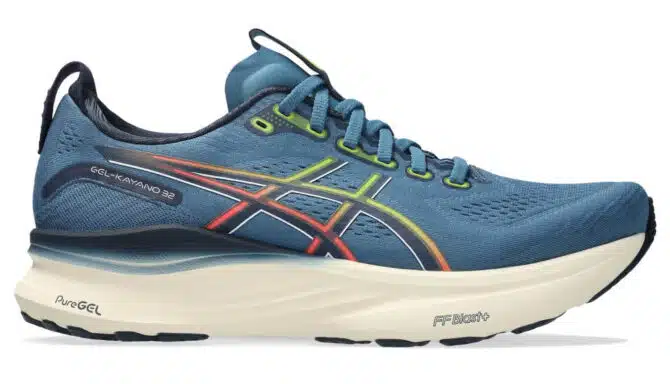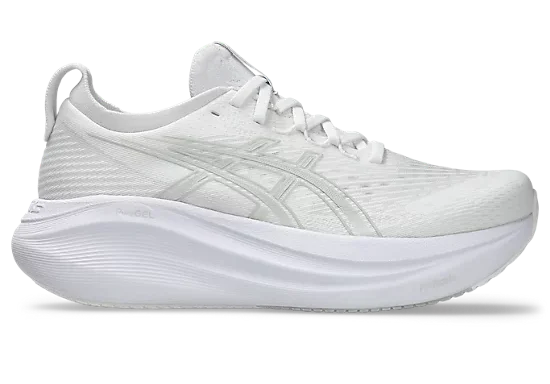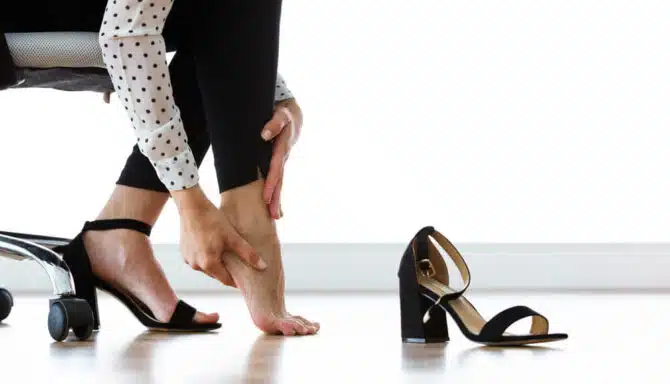How do we know if our running shoes are high quality? What’s more, what should we look for when hunting for new shoes?
It can be easy to simply look for the cheapest pair and call it a day. But before you know it those low-quality running shoes will start to wear down, which puts you at risk of sustaining an injury or developing a chronic foot condition.
Luckily, we’ve compiled a list of essential features that make a great running shoe!
10 Indicators of Great Running Shoes
- Shock absorption
- Cushioning
- Breathability
- Support for your foot type
- Weight
- Flexibility
- Traction
- Durability
- Waterproof
- Bonus Features
Shock Absorption
This is a fancy term for how high-quality athletic shoes withstand impact with the ground. Shock absorbers are frequently mentioned when people discuss vehicles and are described as any device that smoothens or dampens shock impulses.
Shock absorption in your shoes should help your muscles like a car’s shock absorbers protect its parts. The National Library of Medicine notes that sufficient shock absorption is required during the landing phase of running or jumping to protect joints and muscles from impact damage.
When looking for new shoes, you should check the level of shock absorption. One of the best shock absorption technologies includes ASICS GEL cushioning, located in their running shoes’ forefoot or rearfoot (or both). The GEL compound absorbs the shock from the ground, and its foam midsoles offer a solid rebound. Saucony is another example and uses EVA foam and their Super Rebound Compound (SRC) to provide durable shock absorption in the heel crashpad.
Cushioning
Running shoes for women and men will require a solid amount of cushioning. This will help runners avoid common athletic injuries like Achilles tendonitis, muscle strain and stress fractures and also provide general comfort by combating the onset of foot pain and keeping you on your feet for long-distance runs.
Cushioned running shoes are also beneficial for athletes still recovering from an injury and will provide support and comfort as the foot muscles get back to optimal condition.

Breathability
Wearing running shoes with breathable mesh uppers can work wonders for your foot health. After all, when we exercise, our feet start to sweat, so your new shoes should have a way to ventilate and promote a healthy foot environment. Furthermore, a lack of ventilation can put you at risk of developing athlete’s foot or fungal toenails.
Some of the best running shoes for breathability include the Saucony Ride and the Saucony Endorphin. The generously pored mesh and thin fabric help your shoes circulate air and keep the shoe’s interior well-ventilated.
Support and Foot Type
If you’re wondering if a running shoe is worth investing in, check to see if it advertises its support type. In other words, check if it’s a stability, neutral or motion control running shoe.
Generic running and walking shoes often cannot accommodate your specific gait and foot type, but high-quality shoes can.
Here is how to know what type of shoe you will need:
- Stability shoes are for people with flat feet who overpronate (the arch collapses upon weight bearing). These shoes may help prevent complications associated with a low arch, like plantar fasciitis. More specifically, they offer extra support on the shoe’s inner sole, called a medial post.
- Motion control shoes are for runners with more severe overpronation and are essentially stability shoes taken up a notch. In addition to medial support, they offer a stiff heel, firm cushioning and a more rigid midsole.
- Neutral shoes do not contain bonus support features in the midsole. They are typically for “normal” pronators or people with a normal arch. People with high arches can also wear neutral shoes as they don’t need bonus motion control and stability features.
Weight
You don’t want to feel like your shoes are weighing you down while running. You want your feet to feel as light as a feather and to notice a “spring” in your step.
When your shoes are lighter, you can run for longer periods. This is because you’re using less energy to lift your foot off the ground, which protects you from fatigue. Lightweight shoes can also improve your form during exercise. It’s all about making your experience as effortless as possible.
To address the need for lightweight running shoes, top brands have mastered the art of using light materials and breathable membranes, without compromising on supportive features.
Flexibility
Flexibility refers to how much you can bend or twist your shoes. A running shoe can have either a stiff midsole or a flexible midsole, and a clear sign of a good running shoe is knowing its level of flexibility.
Flexible shoes are great for longer runs and comfort enhancement, and they will always be neutral and not include stability features. Flexible shoes are also better for terrain running and are more lightweight.
Stiff shoes will feature stability enhancements and are great for motion control and improving your running performance.
Traction
Sometimes when we go for runs we don’t always have the luxury of smooth, dry pavement or a treadmill. It may start raining, or you may even enjoy taking your runs to some of Toronto’s most beloved trails.
The part of the running shoe responsible for traction is the outsole (bottom of the shoe), which are usually made with rubber. Think of them as similar to a car’s tires, protecting you from slips and falls, but also contributing to the smoothness of the “ride.”
A running shoe should have a strong grip of the pavement and other terrain types. A lot of winter running shoes are made with enhanced traction via a rigid rubber outsole and durable lugs. The Gel-Cumulus GTX or GT-2000 GTX from ASICS and the Saucony Peregrine ICE are examples of running shoes with the best traction.
Durability
For your running shoes to last a long time, they must be durable. Furthermore, the lifespan of a shoe depends on the sum of its parts and the quality levels of the following:
- Upper: The mesh and synthetic overlays must be relatively flexible but maintain a thickness level that extends their lifespan. If the upper of a running shoe is thin, there should be less friction between materials to boost durability.
- Midsole: The density of the midsole, as well as its firmness, will determine how durable a shoe is. EVA foam, for example, has a high level of resistance, making it a durable material.
- Outsole: A weak outsole will ruin your shoes and running experience as it is the point of contact between you and the ground. Generally, the harder the rubber used for the outsole, the more durable it is.
Waterproof
Like breathability and traction features, a waterproof running shoe is critical for rainy weather, moisture control and winter running.
When you stay dry and comfortable, your feet are also protected from rubbing and abrasion, which can lead to blisters.
You can try running shoes made with GORE-TEX fabric for optimal waterproof protection. This membrane consists of a microporous structure that renders fabrics waterproof. Specifically, the microscopic pores are much smaller than water particles, meaning they cannot penetrate the fabric. Some running shoes made with GORE-TEX fabric include the ASICS GT-2000 GTX and the ASICS Cumulus GTX.
Bonus Features
Here are some extra signs of great running shoes you can look out for:
- Reflector accents: These will keep you noticeable and safe while running in the dark.
- Removable footbeds: For athletes with consistent foot pain, custom orthotics or Superfeet insoles may be necessary for long runs. You can look for running shoes with footbeds that you can remove and replace with your medical device of choice.
- Shoe width: Runners with wide feet should look for shoes with varying width options.

